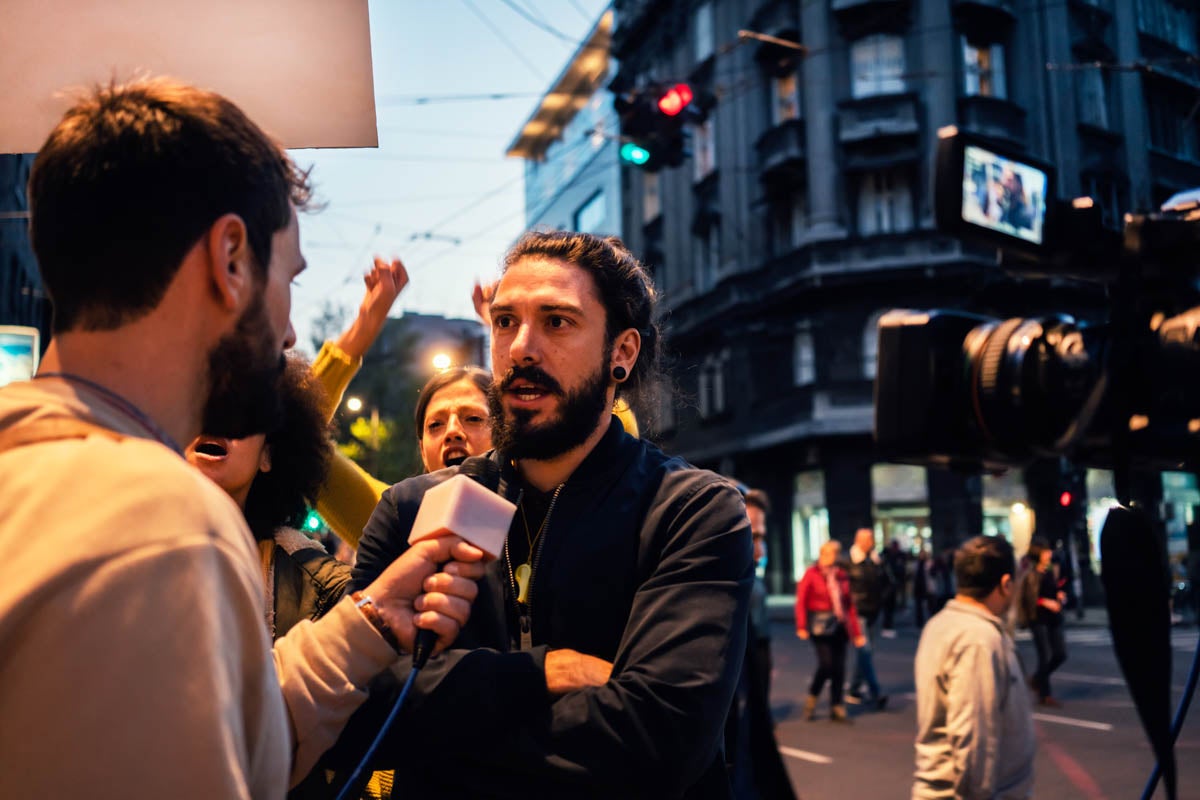The past couple of months for journalists covering stories about race have been tough, but important. It’s shown me how vital our job is to show these messages of pain, sorrow and change.
As a multimedia journalist in Charlottesville, Virginia — the site of a fatal 2017 confrontation between white supremacists and counter-protesters — covering the George Floyd protests now have been peaceful compared to many other cities in the United States.
When I was a UCF student, I would never have guessed what I would be covering within the first three years of my career in TV news. I’m grateful to be in a career where I can continue to tell these stories and share these messages on a wider platform.
The first of many recent protests in Charlottesville started May 29 near the University of Virginia. People lined the sidewalks near UVA Hospital holding signs to support justice for Floyd.
In each person, I saw sadness. I saw anger. I saw fear. Most importantly, I saw their mission for justice.
The bigger protest was scheduled for May 30. As a reporter, I felt anxiety about the end result of the protest. Watching some of the other marches turn violent across the country — and some where reporters were injured — I felt nervous. I couldn’t help but plan for every scenario.
When I received the call from another reporter to meet him downtown, my stomach dropped. I rushed to my car and went to the Charlottesville Police Department, where most of the protesters were meeting.
I noticed hundreds of cars with their flashers on and signs heading toward the police department. I quickly found a safe place to park and discovered the cars were part of the protest, peacefully demonstrating with signs out their windows to practice social distancing.
The protest started at 3 p.m. As I walked toward the police department, I started hearing chants echo through the street. I looked up and saw hundreds of people marching down Market Street toward the Sprint Pavilion. I ran towards the crowd with my camera, tripod, and backpack to capture the scene as it was unfolding.
Not knowing what possible dangers to expect in a time when journalists have sometimes become targets, I am feeling more empowered to use the lessons I learned from school to share the community’s truth.
Hundreds of people filled the Downtown Mall in Charlottesville, holding signs and chanting: “Black Lives Matter.”
It was one of the most emotional protests I’ve covered. In each person, I saw sadness. I saw anger. I saw fear. Most importantly, I saw their mission for justice.
The protests continued through the downtown area as protesters would stop at different locations to do speeches and prayers. The march continued for a mile, until it reached the city’s Washington Park. People took turns speaking their truths, their experiences, and their hopes for the future.
The protest continued the next day with a rally organized by the Albemarle High School Black Student Union. More than 100 people lined the sidewalk holding signs and chanting. The organizer said she simply wanted people to listen and take the protesters’ messages into account.
This experience has shown me more about the importance of journalism, telling stories, and recording history as it unfolds. I welcomed the opportunity and challenge to cover the Charlottesville community, not only in response to the recent national turmoil, but every day.
At the same time, I feel like our jobs as journalists have become a target for some in the community. I often hear statements concerning “the media” and the poor coverage of events. That hurts because I know from my own experience that I and many other journalists work diligently to get the facts and report what’s accurate. That’s the job I aim to achieve every time I walk in the newsroom.
Covering these recent stories also has opened my eyes to the hurt that people are still experiencing in the community. In every person I can see why they were marching and the desire they have to make change happen. Every step was taken with a purpose to make change happen.
These moments have changed me, both as a reporter and human. I’m more aware of the suffering our community is experiencing and their demand for change. Every day isn’t easy, but it’s worth it in the end.
A key lesson I learned from my classes with Professor Erica Rodriguez Kight is to focus your story on a human element and the rest will fall into place. Little did I know this lesson would make a big impact on me starting out in Charlottesville and during the protests.
Every day I meet wonderful people willing to share their stories with me. Each story carries a lesson and a new perspective to see. No matter how many negative comments I might get about “the media,” I know I have succeeded whenever I’m able to tell a person’s story.
Because in every person, I can see why they are marching and the desire they have to make change happen.
Every step is taken with a purpose.
This is part of a series of columns about race and racism written by members of the UCF community.
 Desiree Montilla is a 2017 UCF graduate with a bachelor’s degree in radio-TV and a minor in Latin American studies. She is a reporter covering the news in Charlottesville, Virginia, for CBS19 News.
Desiree Montilla is a 2017 UCF graduate with a bachelor’s degree in radio-TV and a minor in Latin American studies. She is a reporter covering the news in Charlottesville, Virginia, for CBS19 News.




